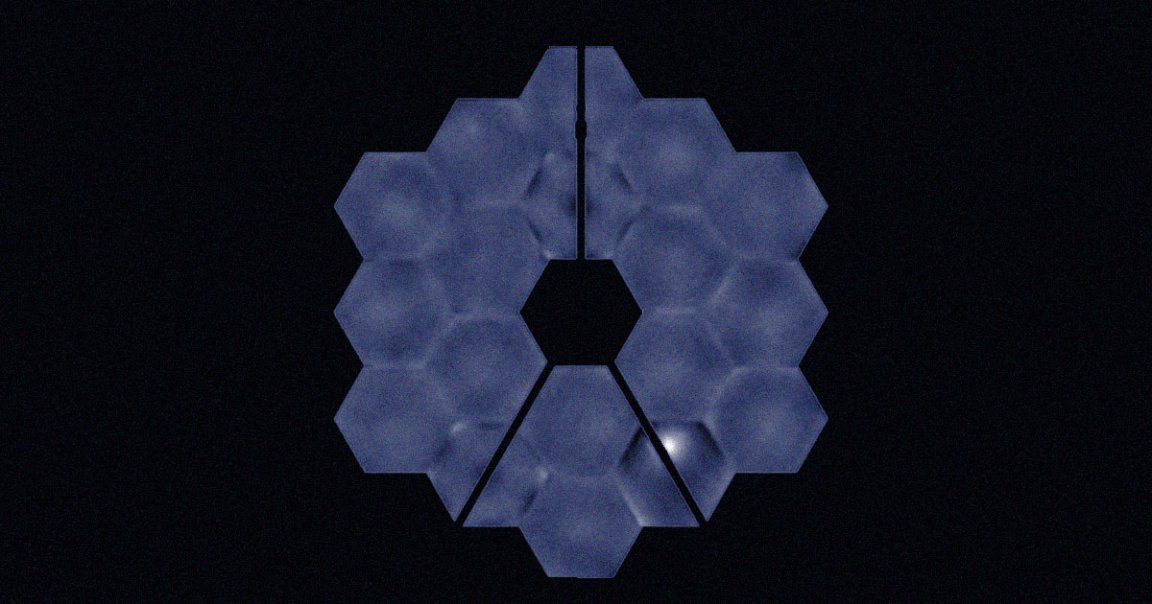
Glancing Blow
NASA has released images of the mirrors of its James Webb Space Telescope after they were struck by a larger-than-expected micrometeoroid.
While the size of the space particle, which impacted the observatory in May, was larger than the team had prepared for, the damage is fortunately isolated to just one of the observatory’s 18 mirrors, as seen in images included in a yet-to-be-peer reviewed study by NASA and its Canadian and European counterparts (the damage can be seen in the bottom right corner of the second image below).
But the team isn’t out of the woods yet. Scientists at NASA are still trying to gauge the true impact that micrometeoroid hits like it could have on the observatory’s operations.

Boing!
Micrometeoroid hits were expected to be a common occurrence long before the telescope launched.
“Inevitably, any spacecraft will encounter micrometeoroids,” reads the report. “During commissioning, wavefront sensing recorded six localized surface deformations on the primary mirror that are attributed to impact by micrometeoroids.”
These deformations occurred at a “rate of roughly one per month,” according to the report, which is “consistent with pre-launch expectations.”
The 19 impacts so far haven’t had much of a detectable effect on operations — except for one. That micrometeoroid “caused significant uncorrectable change in the overall figure of that segment.”
The good news is that “only a small portion of the telescope area was affected,” according to NASA.
Bent Mirrors
Now, scientists are trying to get ahead of the problem, investigating whether the C3 collision was a “rare event” that happens “only once in several years,” or whether pre-launch modeling was wrong about the frequency of these kind of significant hits.
Despite the collisions, the groundbreaking observatory is still exceeding expectations “almost all across the board,” NASA notes, with sensitivity of the instruments higher than expected on the ground.
Throughout the telescope’s development, scientists took slow degradation from micrometeoroid impacts into consideration.
While the collision is certainly a hair-raising moment that came even before scientific operations were able to kick off, scientists are still confident we still have years if not decades of amazing observations to look forward to.
READ MORE: Micrometeoroid damage to James Webb Space Telescope imaged for first time [Astronomy]
More on the observatory: The James Webb’s Hard Drive Is Hilariously Tiny